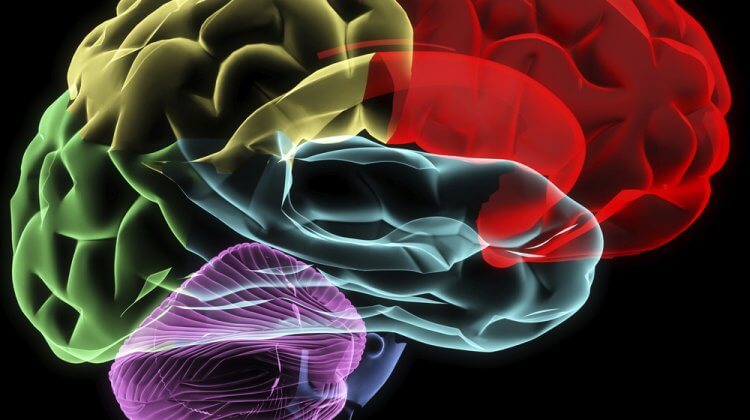
2. Potential Mechanisms for Some Anabolic-Androgenic Steroid Effects on the Nervous System
Anabolic-androgenic steroids have been shown to exert significant effects on both the development and functioning of the nervous system. Androgens were shown to act directly on the brain long ago (Phoenix et al. 1959). These authors suggested that during early development androgens acted to organise neural pathways involved in male behaviours, while during adulthood they acted on differentiated pathways to activate previously organised behaviours. Data from studies of sexual dimorphism in animals clearly demonstrate differences in brain areas in male rats including: a much larger nucleus of the preoptic area (Gorski et al. 1978), a larger mid-portion of the medial amygdaloid nucleus (Nishizuka & Arai 1981), a greater number of motor neurons innervating the bulbocavernosus muscle (Breedlove & Arnold 1980), and a larger superior cervical ganglion (McEwen 1980). This latter testosterone-induced increase in post-ganglionic neuron number has been attributed to the ability of testosterone to increase nerve growth factor (Ishii & Shooter 1975), which in turn enhances neuronal survival (Hendry & Campbell 1976; Levi-Montalcini 1964).
In both rodents and primates androgen receptors are concentrated in the pituitary, hypothalamus, preoptic area, septum, and amygdala (McEwen 1980; Tobet et al. 1985). Androgen receptors in the brain recognise both testosterone and its 5a -reduced metabolite, 5a -dihydrotestosterone (Christensen & Gorski 1978). Many central nervous system and behavioural effects are thought to be produced by aromatisation of androgens to estradiol, which varies from region to region in the brain but is most prominent in the hippocampus, amygdala and preoptic area (McEwen 1980). The roles of aromatisation and 5a -reduction in producing the effects of testosterone in adults are, however, not well studied, particularly with regard to behaviour. Inasmuch as aromatase blockers inhibit testosterone-induced sexual behaviour in male rats (Morali et al. 1977), it seems likely that aromatisation of testosterone to estrogen plays a key role in the facilitation of male sexual behaviour.
Adult male rats eat more and are less active than females (Wade 1976). Castration reduces both eating and activity (Hoskins 1925; Kakolewski et al. 1968; Wang et al. 1925). Low doses of testosterone restore food intake while pharmacological doses reduce it further, a decrease which is blocked by progesterone as is the inhibitory effect of estradiol on feeding, suggesting that the inhibitory effect of high doses is due to aromatisation. 5a -Dihydrotestosterone, which is not aromatisable, increases food intake (Wade 1976). Estradiol, but not 5a -dihydrotestosterone, stimulates locomotion in castrated male rats (Roy & Wade 1975). Antiestrogens attenuate testosterone-induced activity while antiandrogens do not, indicating that aromatisation to estrogen is necessary for enhancement of physical activity (Stern & Murphy 1971). Both testosterone and 5a -dihydrotestosterone thus appear to be responsible for increasing feeding behaviour while aromatisation of testosterone to estrogen is required to increase activity level. Testosterone is known to affect growth hormone secretion (Martin et al. 1968) and plasma somatomedin C (Rosenfield & Furlanetto 1985). In one study of adult athletes self-administrating anabolic-androgenic steroids, but not growth hormone, levels of growth hormone were reported to be 5 to 60 times higher than normal (Alen et al. 1987). Modulation of secretion of growth-promoting, and possibly other, hormones appears to occur via endogenous opiate peptide pathways (Rogol et al. 1990; Veldhuis et al. 1984), probably as a result of the action of the estrogen metabolites of testosterone (Ho et al. 1987). The effects of synthetic anabolic-androgenic steroids, with their prolonged half-lives, and of pharmacological doses are not known, but it is apparent that they or their metabolites can bind to glucocorticoid and progesterone, as well as estrogen, receptors and thus elicit other than purely androgenic effects (Janne 1990).
Data from animal studies indicate that both estrogens and androgens act on neural structures that are identical to or closely associated with sensory pathways and the ventricular recess organs (periventricular gland) of the hypothalamus (Stumpf & Sar 1976). Androgens have been reported to selectively stimulate neurons of the somatomotor system and circuits associated with aggression (Stumpf & Sar 1976). Androgen receptors are located on µ motor neurons (Sar & Stumpf 1977), and play a role in regulating their length in adulthood (Kurz et al. 1986). Androgens also facilitate the release of acetylcholine at the neuromuscular junction of the bulbocavernosus (Vyskocil & Gutmann 1977).
Itil et al. (1974) have demonstrated quantitatively the physiological correlates of certain previously reported behavioural effects of an anabolic-androgenic steroid (mesterolone) such as an increase of mental alertness, mood elevation, improvement of memory and concentration, and reduction of sensations of fatigue, all of which can partly be related to the central nervous system (CNS) ‘stimulatory’ effects of mesterolone. Electroencephalographic profiles of varying dosages of mesterolone were found to be very similar to those seen with psychostimulants such as dextroamphetamine and the tricyclic antidepressants. Single oral doses as low as 1 mg were shown to affect brain function. Others (Broverman et al. 1968; Klaiber et al. 1967; Stenn et al. 1972) have concluded that the adrenergic-like effects of testosterone on brain function are as a result of an elevation of the brain noradrenaline (norepinephrine) level, which might be the result of the inhibition of brain monamine oxidase (MAO) activity. Further speculation indicates that the ‘heightened’ state of behavioural reactivity which facilitates the automatisation of behaviour may well be due to an increased level of brain noradrenaline.
Hannan et al. (1988) have examined plasma homovanillic acid changes following 6 weekly intramuscular injections of 100 or 300mg of testosterone enanthate or nandrolone decanoate administration in 25 males and found significant increases in homovanillic acid for both of the nandrolone but neither of the testosterone treatments. Since a large proportion of plasma homovanillic acid originates from CNS metabolism of dopamine, the demonstrated change associated with nandrolone administration confirms an anabolic-androgenic steroid-induced alteration in CNS neurotransmitter metabolism and suggests a mechanism to explain reported altered behaviour in some anabolic-androgenic steroid users. Interestingly in this regard the deletion of the 19-methyl group in nandrolone produces a more planar steroid than testosterone that thus, like 5µ -dihydrotestosterone, has altered receptor binding affinities, as well as unique metabolites. It must be added that estrogens are also known to alter central nervous system neurotransmitters through inhibition of monamine oxidase activity, so aromatisation of testosterone to estrogen could also play a role (Klaiber 1972).
Inasmuch as improvements in muscle strength and power can in part be accounted for by neural factors, including neurotransmitter levels (Hakkinen & Komi 1983; Moritani & deVries 1979), findings that androgens may in some manner modify neural and neuromuscular functions support the concept of a significant role for these mechanisms in the production of ergogenic effects (Alen et al. 1984; Brooks 1980; Hakkinen & Alen 1986; Wilson 1988).
Part 3: Plasma Testosterone Levels and Aggression
Originally appearing in Sports Medicine 10(5) 303-337. 1990. Copyright © 1990 by Adis International Limited. All rights reserved. Reprinted by MESO-Rx with permission. Any duplication of this document by electronic or other means is strictly prohibited.
About the author
Warning: Undefined array key "display_name" in /home/thinksteroids/public_html/wp-content/plugins/molongui-authorship-pro/includes/hooks/author/box/data.php on line 11
Warning: Undefined array key "display_name" in /home/thinksteroids/public_html/wp-content/plugins/molongui-authorship-pro/includes/hooks/author/box/data.php on line 11
Warning: Undefined variable $show_related in /home/thinksteroids/public_html/wp-content/plugins/molongui-authorship/views/author-box/parts/html-tabs.php on line 30



Leave a Reply
You must be logged in to post a comment.